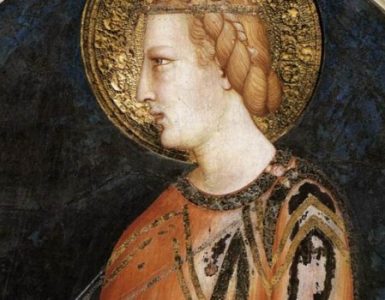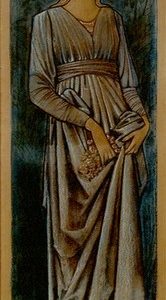Marshall McLuhan, dubbed “the oracle of the electronic age,” built a dazzling career around the aphorism “the Medium is the Message.” It is a phrase that won over students, fascinated the public, captivated politicians, and irritated his critics.
As a master of wordplay, McLuhan found a variety of ways to spin his famous aphorism. He titled his 1967 book The Medium is the Massage, playing on the mesmerizing effect that the media has on the public. The medium is also the “mass age,” indicating its dominance among the masses. In addition, it is “the mass sage,” as if there is any wisdom in the masses. In a steakhouse which is also a front for espionage activities, the waitress approaches one of three diners and whispers, “The medium is the message.”
The word “medium” is important not only because it describes a middle situated between the public and reality, but also because it applies to Mary the Mother of God and how she stands between God and humanity. Did McLuhan see any connection between the “media” and the “Mediatrix”? McLuhan, a daily communicant, remained unfazed by his critics because he had someone more important who was on his side, Mary, the Mother of God.
A colleague once alluded to this as a result of a conversation he had with McLuhan in which the latter spoke to him “almost fearfully” and “in a please-don’t-laugh-at-me tone.” “It was clear to me,” the colleague surmised from the conversation, “that one of the reasons McLuhan was so sure about certain things was that the Virgin had certified his understanding of them.”
A mediator is a person who assists in reconciling differences between two parties and helping them achieve a better understanding. Mary, by bringing Christ into the world, is a “Mediatrix” who stands between God and all her adopted children. It is through her mediation that God came into the world. In the Gospel passages in which she appears, she always presents her Son to others: to the shepherds and to the Magi at the Nativity, to Simeon at the Presentation, and to the guests at the wedding at Cana. Her role is intercessory in an exalted way because of her willingness to conceive and give birth to Christ.
John Paul II uses the title Mediatrix a number of times in his encyclical Redemptoris Mater. “Mary’s mediation,” he writes, “is intimately linked with her motherhood…through this fullness of grace and supernatural life she was especially predisposed to cooperation with Christ, the one Mediator of human salvation. And such cooperation is precisely this mediation subordinated to the mediation of Christ.”
This notion of Mary as a medium has been noted by non-Catholics. In a remarkable passage, the American novelist Nathaniel Hawthorne speaks well of the Blessed Mother: “I have always envied the Catholics their faith in that sweet, sacred Virgin Mother who stands between them and the deity, intercepting somewhat His awful splendor, but permitting His love to stream on the worshipper more intelligibly to human comprehension through the medium of a woman’s tenderness.”
Here the author suggests that Mary’s role as Mediatrix is enhanced due to her greater accessibility as a mother who possesses womanly tenderness. It may be easier for many people to relate to Mary because of these factors.
Raniero Cantalamessa titles his book Mary, Mirror of the Church because Mary’s role is to be a mirror of the Church “to reflect the light she herself receives, as a mirror does with the light of the sun.” In this regard, she may be compared with the moon that also reflects the light that she herself does not possess. Many languages refer to the sun using the masculine gender while referring to the moon as feminine.
Bishop Fulton Sheen, whose passion for poetry is on par with his love for theology and philosophy, amplifies Cantalamessa’s image and applies it to the state of the world: “On dark nights we are grateful for the moon; when we see it shining, we know there must be a sun. So in this dark night of the world when men turn their backs on Him Who is the Light of the World, we look to Mary to guide their feet while we await the sunrise.”
Just as the moon is a medium between the earth and the sun, so, too, Mary is a Mediatrix who relays the light of God to people in need of being enlightened. She may also be compared with a window through which our humanity catches its first glimpse of the Divine. Because of her humility, she does not stand in the way of God, calling attention to herself, but reveals Him to others.
Because of her unique relationship with her Son, she is also bears the title of “Mediatrix of All Graces.” On September 8th of 2012, during the Feast of the Nativity of Mary, a visionary by the name of Emma de Guzman stated that the Virgin Mary revealed her maternal role as “Mediatrix before the Mediator,” a special title associated by many Filipino Catholics in reference to “Our Lady Mediatrix of All Graces.”
Unlike Marshall McLuhan, despite his devotion to Mary, being a medium is not the message of the Blessed Mother. Her message is to present to the world her Son, Christ the Redeemer. As a medium, this is her message, pure and undiluted. In her case, the Medium is the Messenger.
Photo by tony wallström on Unsplash










